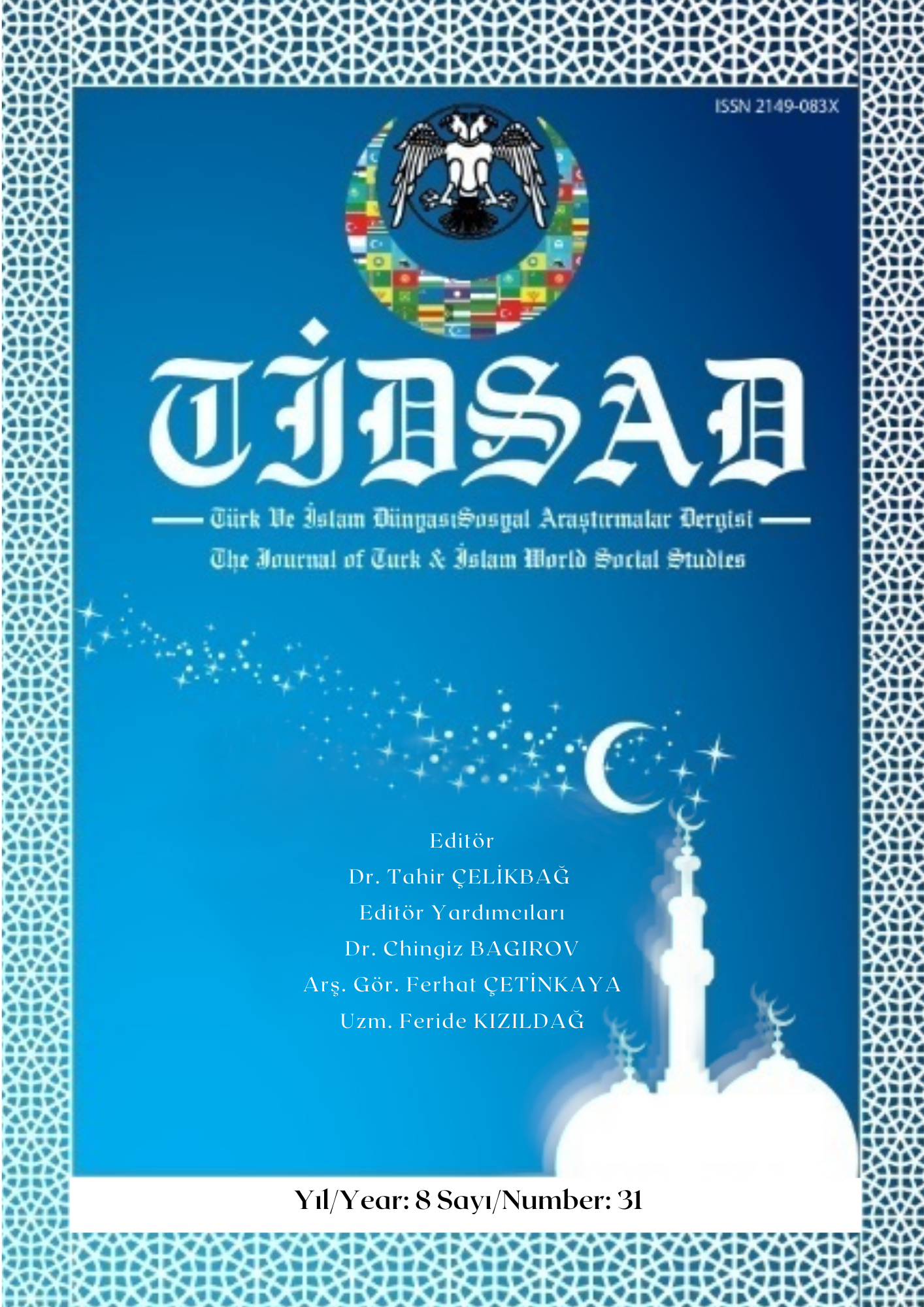Author :
Abstract
Sosyal yaşam içinde her alanda olduğu gibi müzik sanatında da gerek icracı gerekse bestekâr olarak yer alan kadın, bazı dönemlerde toplumsal yapının gerekliliklerinden dolayı geri planda kalsa da verimliliğini her dönem sürdürmeyi başarmıştır. Türk müzik tarihine yüzyıllar açısından bakıldığında kadının bu verimliliğini giderek artırdığı görülmektedir. 20. Yüzyıla daha yakın dönemde yaşamış olan Leyla Saz, İhsan Raif Hanım ve Nigâr Galib Ulusoy gibi kadın bestekârların daha çok eser bestelemesi, dönem ilerledikçe kadınların müzikte daha aktif yer aldığı düşüncesini akla getirmektedir. 19. yüzyıl, önceki dönemlere nazaran kadınların özellikle saray ve çevresinde almış oldukları müzik eğitiminin bir neticesi olarak parlak bir dönem olarak görülebilir. Çünkü saray ve çevresi müziğin önemli merkezlerinden birisi olarak görülmektedir. Bu araştırmada yapılan literatür taramasıyla 19. Yüzyılda yaşamış ve eser bestelemiş olan 27 kadın bestekâra yer verilmiştir. Araştırmada yer alan bu kadın bestekârların hayatı, bestelemiş oldukları eserlerde kullandıkları makam, usûl ve form anlayışı çalışmanın içeriğini oluşturmaktadır. Araştırmanın kavramsal çerçevesini oluşturan toplumsal cinsiyet ve Türk Müziğinde kadın konuları ise genel anlamda kadınların müzikteki yerini irdelemeye yöneliktir.
Keywords
Abstract
The women who takes place in the art of music as in every field in social life as both a performer and a composer, although they have remained in the background in some periods due to the requirements of the social structure, they have managed to maintain their efficiency in every period. When evaluated at the history of Turkish music in terms of centuries, it is seen that this productivity of women has increased gradually. The fact that female composers such as Leyla Saz, İhsan Raif Hanım and Nigâr Galib Ulusoy, who lived closer to the 20th century, composed more works, brings to mind the idea that women took a more active part in music as the period progressed. Compared to previous periods, the 19th century can be seen as a productive period as a result of the musical education that women received, especially in the palace and its surroundings. Because the palace and its surroundings are seen as one of the important centers of music. In this research through a literature review, 27 female composers who lived and composed works in the 19th century were included. The life of these female composers in the research, the maqam, rhythm and form understanding they preferred in the works they composed constitute the content of the study. Gender and women in Turkish Music, which constitute the conceptual framework of the research, are generally aimed at examining the place of women in music.
Keywords
- Ak, Ş. A. (2002). Türk Musikîsi Tarihi. Ankara: Akçağ Yayınları
- Ay, B. (2018). Tanburi Cemil Beyin Sözlü Eserlerinin Makamsal Açıdan İncelenmesi (Ta- mamlanmış Yüksek Lisans Tezi). Afyon Kocatepe Üniversitesi Sosyal Bilimler Enstitüsü, Afyonkarahisar.
- Behar, C. (2012). Aşk Olmayınca Meşk Olmaz. İstanbul: Yapı kredi Yayınları
- Beşiroğlu, Ş.Ş. (2018). Kadın ve Müzik (2. Baskı). İstanbul: Milenyum Yayınları
- Beşiroğlu, Ş.Ş.(2006). İstanbul’un Kadınları ve Müzikal Kimlikleri. İTÜ Sosyal Bilimler Der- gisi, 3 (2), 3-19.
- Budak, A. O. (2000). Türk Müziğinin Kökeni-Gelişimi, Deneme. Ankara: T.C. Kültür Bakanlığı Yayınları, Sanat-Müzik Eserleri Dizisi.
- Çevik, A. E., Kaltakcı, M.Y. (2011).Türk Musiki Geleneğinde Kadın ve Kadın Bestekârlar. Türkiyat Araştırmaları Dergisi, 29, 609-639.
- Demir, S. (2012). Haremde Yaşam Saray ve Harem Hatıraları. İstanbul: Dün Bugün Yarın Yayınları.
- Karlıklı, S. (2019). Osmanlı Dönemi Musiki Hayatı ve Dönemin Kadın Tanburileri Üzerine Bir Değerlendirme. Avrasya Sosyal ve Ekonomi Arattırmaları Dergisi, 6(6), 90-98.
- Özalp, M. N. (2000). Türk Musikisi Tarihi. Ankara: Millî Eğitim Bakanlığı Yayınları.
- Öztuna, Y. (1987). Türk Musikîsi Teknik ve Tarih. İstanbul: Kent Basımevi.
- Taşan, T. (2000), Kadın Besteciler. İstanbul: Pan Yayıncılık.
- Uçan, A. (1997). Geçmişten Günümüze – Günümüzden Geleceğe Türk Müzik Kültürü, Bildi- ri Metni, 4. Uluslararası Türk Müzik Kongresi. Ankara: Atatürk Kültür Merkezi.





